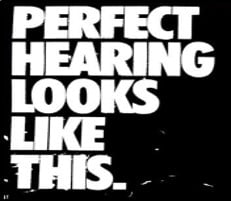Why are Assistive Listening Systems Needed?

Images used with permission from Pat and Brenda Brown www.prosoundtraining.com

Images used with permission from Pat and Brenda Brown www.prosoundtraining.com
Why Are Assistive Listening Systems Needed?
People with hearing loss often struggle to understand speech when there is background noise, reverberation, or when the sound source is more than six feet away. Assistive listening systems improve auditory comprehension in three ways: they filter out background noise, override poor acoustics, and reduce the distance from the sound source.
Assistive listening systems give up to 30 dB SNR. See research graph (this website). These systems bring clarity that cannot be achieved in other ways.
- Hearing aids help, but don’t cure hearing loss. Hearing aids improve SNR (signal-to-noise-ratio) by approximately 6 dB. Also, turning up their hearing aid volume magnifies extraneous noise and reverberation as well as the desired “signal.”
- People who don’t wear hearing aids need access to clear speech in public places.
- People with hearing loss need sound clarity. It’s not just about loudness.
- People with other disabilities need clear, focused audio.
- Room acoustics can be problematic for individuals with hearing loss and many others.
Who uses assistive listening systems?
These systems are available for everyone! You don’t need to have “bad” hearing to use these systems. People with mild to profound hearing loss, people on the autism spectrum, people who have low vision and need to know which voice to listen to, auditory processing needs, etc. Anyone who wishes to hear clearer with less background noise!
Resources
- Louder Isn’t Necessarily Better article by Stephen O. Frazier, Sound & Communications (webpage)
- Like the Mic (this website)
